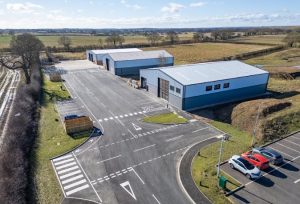What’s in store for the property industry in 2011?

In the final part of our series looking ahead at what’s in store for the property industry, TheBusinessDesk.com asks Yorkshire property professionals to gaze into their crystal balls and predict how they see the sector panning out in 2011….

“There’s no doubt that 2010 was another difficult year for Yorkshire’s property market although as a business we experienced a noticeable improvement in comparison to the previous 12 months. Whilst transaction figures remain challenging, other parts of the industry have actually grown, so diverse businesses with varied income streams are certainly well-placed to lead the recovery.
“This strategy enabled us to outperform the market and start recruiting again during 2010 with departments such as property management, healthcare and town planning all doing particularly well.
“In 2011 public sector cuts will continue to hit confidence and the banks reluctance to lend remains a key challenge so we are in for another tough year although the fragile recovery that we have seen so far looks set to continue.”
:::
Eamon Fox, associate director at DTZ:
“The regional occupational office market has been extremely challenging during 2010. Activity is 50% down on the ten-year average, with circa 250,000 sq ft of new activity recorded for Leeds city core. We have seen occupiers chase value and the mentality has very much been a cautious one, with occupiers only really moving out of necessity, as opposed to aspiration.
“That said, the signs are better for 2011. There are a handful of larger occupiers who will be forced to think about their medium-term property needs from 2013 onwards and will be going down the route of pre-letting preferred options during 2011.
“We are already using the word pre-let more frequently, which is a good barometer for our industry.”
:::
Jeff Pearey, director and head of Jones Lang LaSalle’s Leeds office:
“2010 ended in a flurry of snow storms and arctic temperatures but hardly a flurry of occupier activity.
“The anticipated total take-up figure for Leeds office leasing in 2010 is set to just 50% of the ten year running average for office activity in the city.
“The lack of larger sized lettings will remain a key issue in 2011. We are optimistic that there will remain a good spread of smaller sized lettings, the engine room of the market place, but anticipate there will be some larger corporate firms who we feel will begin to dust off the plans that they started putting in place two to three years ago.
“Notwithstanding the spectre of continuing public sector cuts, our view is that elements of the private sector will perform well and smaller seedbed businesses will continue to develop and grow.
“2011 is likely to still be a year of consolidation and caution for many, but occupiers, eager to ensure they take advantage of gradually diminishing Grade A supply will be wise to keep their property needs under constant review whilst there remains some choice.”
:::

“I think the shed market will have a reasonable 2011. Parts of the manufacturing sector are doing well and there are some requirements out in the market from this sector. They are more likely to require bespoke premises than distributors so are more likely to take a new design and build unit.
“The big-shed market improved dramatically in 2010 in terms of take up and there remains a good supply in South Yorkshire but West Yorkshire is very thin on stock and this is not expected to improve.
“Whilst some requirements are very footloose, those looking for larger premises in the Leeds- Normanton area have very few options, and again will need to consider either design and build or alternative locations.
“The mid-size market, places like Leeds, Sheffield and Wakefield, will continue to struggle with a lack of modern stock and an oversupply of older space. This will result in the market polarising with values and terms strengthening on the more modern kit, with design and build becoming a stronger option and the cost gap closing.”
:::
Paul Lancaster, managing director of 4Urban:
“The most prevalent obstacle to development activity during 2010 was certainly access to funding. Any development activity that did proceed was predominantly by agile companies, such as 4Urban, that have cash in the bank.
“I don’t see this improving over the coming months although AXA has now thrown its hat in to the ring with a £350m debt fund for commercial property and it will be interesting to see how this plays out.
“The opportunities during 2011 will predominantly come from distressed situations as re-financing unravels and as an opportunistic developer we will most certainly be looking selectively at situations.
“The retail market will experience major challenges during 2011. Investors will be very selective as the gap between prime and secondary assets widens and the north and south divide reverts.”
:::

“Although there is a definite feeling that confidence is slowly returning to the property market in Yorkshire, the continuing economic challenges provided by limited availability of credit, together with the increases in the rate of VAT and recent government spending, aren’t helping.
“However, we are seeing more innovative thinking by property owners when trying to improve their financial position and making empty space more attractive to potential tenants.
“For instance, our energy team is seeing a distinct upward trend in both property owners and renewable energy companies seeking financial benefits from the installation of renewable energy schemes – mostly solar – on roof space and redundant land.
“Such installations provide land owners with a rental income as well as the possibility of buying the ‘green’ electricity produced by such installations at an advantageous price. These landowners benefit, but so do the energy company tenants who gain from the income generated from the sale of the electricity produced together with the government feed-in tariffs.”
:::
Matthew Edwards, regional managing partner at Ryden in Leeds
“The fortunes of the commercial property market are strongly (though not exclusively) linked with the health of the economy. The consensus is for a slight fall in capital values during 2011, as 2010 has seen a steady slowing of growth, and with a number of institutions looking to reduce exposure to property, we expect this to lead to a modest drop in pricing. We expect the pricing gap between prime and secondary properties to continue to widen.
“Much of the institutional money earmarked for property has been focused on London, however 2010 saw some big deals in Leeds, such as NFU Mutual’s purchase of No 1 Whitehall Riverside for £51.3m and Gatehouse Bank’s £40.175m buy of the BT building. These deals demonstrate confidence in the long term prospects of the city and we expect continued demand for high quality investments throughout 2011, especially where there are opportunities to add value through lettings, re-gears etc.
“Overall, we expect a continuation of the tough times for commercial property in the city region, but with greater cause for optimism as the economy recovers. Longer term prospects remain healthy and there are good opportunities for the well informed investor and occupier, with the fundamentals of a quality product and location remaining paramount.”
:::
Tom Cullen director of retail agency at Colliers International’s Leeds office:
“2010 remained a tough market for the retail sector but a definite improvement on 2009. In my view 2010 was the year that ‘stopped the rot’ in respect of lettings and retailer interest. We saw increased confidence from landlords to progress viable options for development and retailers taking space.
“Certainly the announcement from Land Securities to progress Trinity Leeds was the major news of last year. With an expectation for significant progress both on lettings and development of Trinity during 2011 the new shopping centre will undoubtedly boost confidence in the retail property market in the region. The confirmed quality and size of both the tenants and development in a time of uncertainty is likely to make Leeds specifically and Yorkshire more generally the subject of national interest.
“This cautious optimism must be tempered with the current uncertainty over the impact of increased VAT and the general economic climate as the public sector cuts and other policy affects consumer and, therefore, retailer confidence.”
:::

“The market has been quite tough because major events in 2010 have discouraged businesses from making big investment decisions but we’re encouraged by the level of interest among some big operators in sites in the Humber and East coast area.
“We’ve had a good deal of activity in partnership with GVA Grimley, DTZ and JLL and with Horncastle Group, a significant local player.
“Going forward businesses from Whitby all the way down to the south of the Humber are looking forward with anticipation to developments this year in renewable energy, and particularly offshore wind farms.
“There are no guarantees and there will be serious competition for the investment but the Humber has the infrastructure and the skills base and people here are optimistic about securing the work. That could have a huge impact on the rest of the area’s economy.”
:::
Andrew Gardner, partner at DLG Architects in Leeds
“One of the major stumbling blocks over the last few years was the major crisis of confidence and of course available funding in the property world. However I am optimistic that 2011 will be more of a ‘glass half full year’ as developers look to have properties in place for the expected upturn in demand in 2012 and 2013.
“We are certainly seeing more and more activity in the retail, office and leisure sectors with both refurbishment and new build projects underway all of which are underpinned with very strong sustainable credentials.
“We are also reviewing a number of major masterplan proposals that were historically generated by the now distant residential boom. These sites are coming forward again as more realistically scaled mixed use developments often led by food retail as the catalyst for regeneration.”
:::

“I am confident 2011 will be better than 2010. Professional firms are starting to recruit again and you can sense that the market is a bit more upbeat. People are starting to talk about doing deals and we are being asked to provide more quotes.
“But, who knows for certain. I was told by a Leeds agent two years ago that the sale of 1 Park Row to Evans was the bottom of the market. The Times last Saturday quoted the sale of Sainsbury’s in Macclesfield to Aviva at a yield of 4.4% as a sign that property was hot again. Where did the two years in between go?
“I don’t suppose it really matters now. We all know the liquidity issues, the increased price of borrowing, the higher equity requirements, the general lack of confidence and growth, but it is getting better.
“We have to adapt to this new world . This is it for now, so we need to knuckle down, get the deals over the line and look forward to a better and brighter 2011.”








